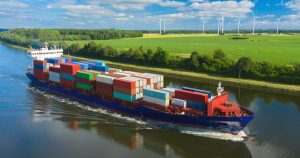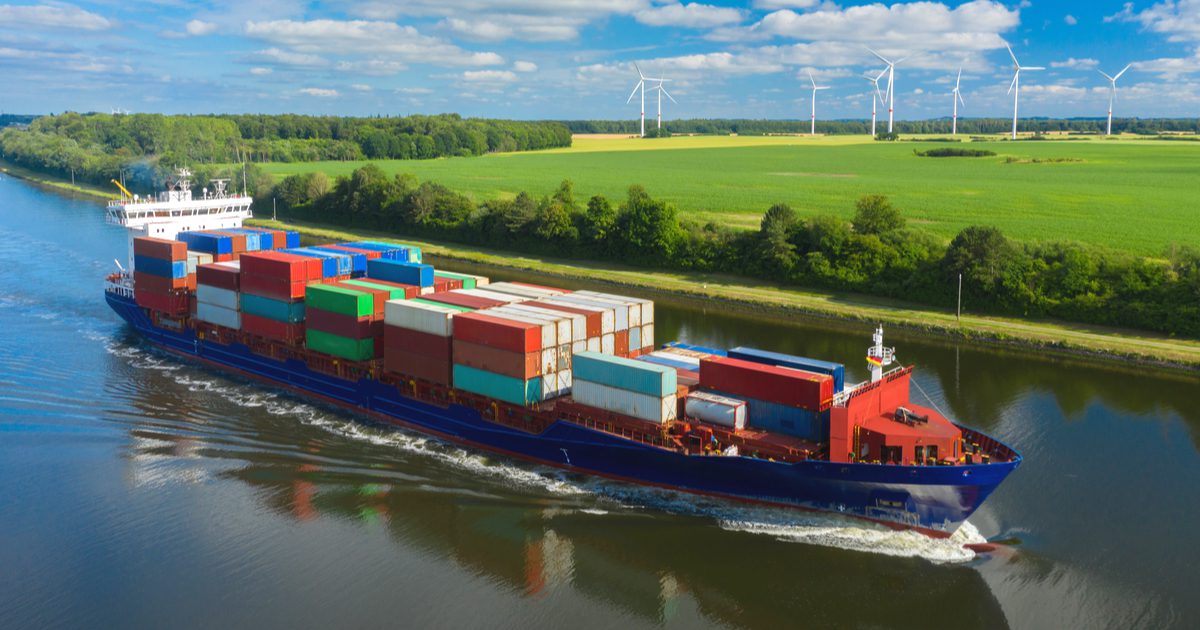Ship handling is the skill of maneuvering a vessel through various conditions and situations, including navigating through tight spaces, docking, berthing, and mooring. As a deck navigation officer of a commercial ship, it is essential to have a strong understanding of ship handling to ensure the safe and efficient operation of the vessel. In this response, we will explore the key aspects of ship handling.

Maneuvering a Vessel: Maneuvering a vessel requires the use of propulsion, rudder, and thrusters to move the ship through the water. The captain or navigation officer must have a clear understanding of the vessel’s propulsion and steering capabilities, as well as the forces that affect the ship’s movement through the water. Maneuvering a vessel is one of the most critical skills that a deck navigation officer of a commercial ship must possess. It involves the use of propulsion, rudder, and thrusters to move the ship through the water, and requires a deep understanding of the vessel’s handling characteristics and capabilities.
- Propulsion:Propulsion is the force that moves the ship through the water. The most common propulsion system in commercial ships is the diesel engine, which drives a propeller to move the vessel forward or backward. The navigation officer must have a clear understanding of the vessel’s propulsion system, including its power output, fuel consumption, and maintenance requirements. They must also be able to operate the engine and adjust the speed and direction of the vessel as needed.
- Rudder:The rudder is a vertical flat plate located at the stern of the vessel that is used to control the direction of the ship. The navigation officer must understand how the rudder works and how to use it to steer the vessel. They must also be able to adjust the rudder angle to maintain the desired course, taking into account the effect of wind, current, and other external forces on the ship.
- Thrusters:Thrusters are small propellers located at the bow or stern of the vessel that can be used to provide additional propulsion or maneuvering force. The navigation officer must be able to operate the thrusters and understand how they affect the vessel’s maneuverability.
- External Forces:External forces such as wind, current, and waves can affect the ship’s movement through the water. The navigation officer must understand how these forces affect the vessel’s handling and adjust the propulsion, rudder, and thrusters as needed to maintain control.
Docking and Berthing: Docking and berthing are critical aspects of ship handling that require precise maneuvering to ensure the vessel is safely secured to the dock. When docking or berthing, the navigation officer must consider factors such as wind, current, and vessel size and shape to determine the best approach and positioning for the ship. Docking and berthing are critical aspects of ship handling for deck navigation officers of commercial ships. They require precise maneuvering to ensure that the vessel is safely secured to the dock or berth, and that the crew and cargo can be loaded or unloaded safely.
- Approach and Positioning: When approaching a dock or berth, the navigation officer must consider several factors, including the wind, current, vessel size and shape, and the availability of mooring lines and fenders. They must determine the best approach angle and positioning for the ship to ensure a safe and successful docking or berthing.
- Wind and Current: Wind and current are two critical factors that can impact the safe docking or berthing of a vessel. The navigation officer must take into account the direction and strength of the wind and current and adjust the vessel’s approach and positioning accordingly. The use of thrusters and tugs can also help to counter the effects of wind and current and maintain control of the vessel.
- Mooring Lines and Fenders: Mooring lines and fenders are used to secure the vessel to the dock or berth and protect it from damage. The navigation officer must ensure that the mooring lines are properly secured and that the fenders are positioned correctly to prevent damage to the vessel.
- Communication: Clear communication between the navigation officer, bridge team, and shore personnel is critical during the docking and berthing process. The navigation officer must communicate the vessel’s position, speed, and direction to the shore personnel, and receive guidance and feedback to ensure a safe and successful docking or berthing.
Anchoring: Anchoring a vessel requires careful consideration of the anchor’s weight, depth of water, and the nature of the seabed to ensure that the vessel remains securely in place. The anchor must be deployed and retrieved properly, and the navigation officer must be aware of the impact of currents and tides on the vessel’s position. Anchoring is a critical aspect of ship handling for deck navigation officers of commercial ships. It involves securing the vessel in a fixed position using an anchor and chain, and requires careful consideration of several factors to ensure that the vessel remains securely in place.
- Anchor Weight: The weight of the anchor must be appropriate for the size and weight of the vessel, and the conditions in which it will be used. The navigation officer must ensure that the anchor is strong enough to hold the vessel in place, even in rough weather conditions.
- Depth of Water: The depth of water at the anchoring location is an essential factor to consider. The navigation officer must ensure that the anchor chain is long enough to reach the seabed and that there is sufficient water depth to accommodate the vessel’s draft.
- Nature of the Seabed: The nature of the seabed, such as the type of soil, rocks, or other obstacles, is critical in anchoring a vessel. The navigation officer must ensure that the anchor is deployed in a location where the seabed can hold the anchor securely, and that the anchor will not become dislodged in adverse weather conditions.
- Currents and Tides: Currents and tides can significantly impact the position of the vessel, and the navigation officer must take them into account when anchoring the vessel. They must be aware of the expected changes in the water level due to tides and the effect of currents on the vessel’s position. The navigation officer must also ensure that the anchor chain is not twisted or fouled by underwater obstacles.
- Deployment and Retrieval: Proper deployment and retrieval of the anchor are critical to ensure that the vessel remains secure at anchor. The navigation officer must ensure that the anchor is dropped in the correct location, and that the chain is released at the right speed to avoid tangling or fouling. They must also ensure that the anchor is retrieved properly and stowed safely before the vessel sets sail.
Navigating in Restricted Waters: Navigating through narrow waterways or congested ports requires careful maneuvering to avoid collisions with other vessels, bridges, and obstacles. The navigation officer must know the vessel’s size and draft and communicate effectively with other vessels and port authorities to ensure safe navigation. Navigating in restricted waters is a critical aspect of ship handling for deck navigation officers of commercial ships. It requires careful maneuvering to avoid collisions with other vessels, bridges, and obstacles, and the navigation officer must have a deep understanding of the vessel’s size and draft.
- Vessel Size and Draft: The size and draft of the vessel are critical factors to consider when navigating through restricted waters. The navigation officer must know the vessel’s length, width, and height, as well as its draft, to ensure safe passage through narrow waterways or under low bridges.
- Effective Communication: Effective communication is critical when navigating in restricted waters. The navigation officer must communicate effectively with other vessels and port authorities to ensure that everyone is aware of the vessel’s position and intentions. This can include the use of radio communication, visual signals, and whistle signals.
- Navigational Aids: Navigational aids such as buoys, beacons, and lights can be used to guide the vessel through restricted waters. The navigation officer must be familiar with these aids and understand their meanings and positions to ensure safe navigation.
- Maneuvering Techniques: Maneuvering techniques such as pivot points, swing circles, and bank suction must be used when navigating in restricted waters. These techniques help the navigation officer to avoid collisions with other vessels or obstacles and ensure that the vessel stays on course.
- Local Regulations: Local regulations and traffic patterns must be taken into account when navigating in restricted waters. The navigation officer must be aware of any speed limits, no-wake zones, or other restrictions that may be in place.
Controlling the Vessel in Heavy Weather: Operating a vessel in heavy weather can be challenging, as strong winds and high seas can impact the ship’s stability and maneuverability. The navigation officer must have a clear understanding of the vessel’s handling characteristics in heavy weather and take appropriate action to maintain control and ensure the safety of the crew and vessel. Controlling the vessel in heavy weather is a critical aspect of ship handling for deck navigation officers of commercial ships. Strong winds and high seas can impact the ship’s stability and maneuverability, and the navigation officer must have a clear understanding of the vessel’s handling characteristics and take appropriate action to maintain control and ensure the safety of the crew and vessel.
- Vessel Stability: The navigation officer must understand the vessel’s stability in heavy weather conditions. They must know the vessel’s center of gravity, center of buoyancy, and the impact of waves and wind on the vessel’s stability. The navigation officer must adjust the vessel’s speed, course, and trim to maintain stability in heavy weather conditions.
- Maneuvering Techniques: The navigation officer must use appropriate maneuvering techniques to maintain control of the vessel in heavy weather. This may include changing the vessel’s course or speed, using thrusters or rudder to maintain the vessel’s heading, or adjusting the vessel’s draft to reduce its exposure to waves.
- Communication: Clear communication between the navigation officer, bridge team, and crew is essential during heavy weather conditions. The navigation officer must communicate the vessel’s position, speed, and course to the bridge team and crew, and receive feedback and input to adjust the vessel’s maneuvering as needed.
- Equipment and Maintenance: The navigation officer must ensure that all equipment necessary for heavy weather conditions is available and in good working order. This may include items such as storm anchors, life rafts, and storm shutters. Regular maintenance and testing of this equipment is critical to ensure that it is ready for use in an emergency.
- Weather Forecasting: The navigation officer must closely monitor weather forecasts to anticipate and prepare for heavy weather conditions. They must be aware of the expected wind and wave patterns and adjust the vessel’s course and speed accordingly.
In summary, ship handling is a critical skill for deck navigation officers of commercial ships. It requires a deep understanding of vessel propulsion and steering capabilities, as well as an awareness of the various factors that can impact the vessel’s maneuverability and stability. By mastering ship handling techniques and best practices, navigation officers can ensure the safe and efficient operation of their vessels.
Prepared by MaritimEducatio team.

